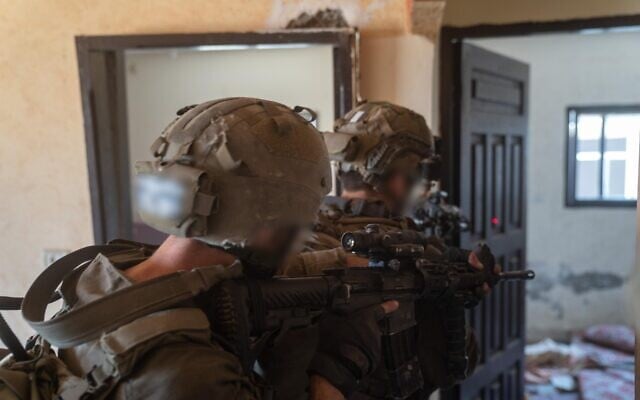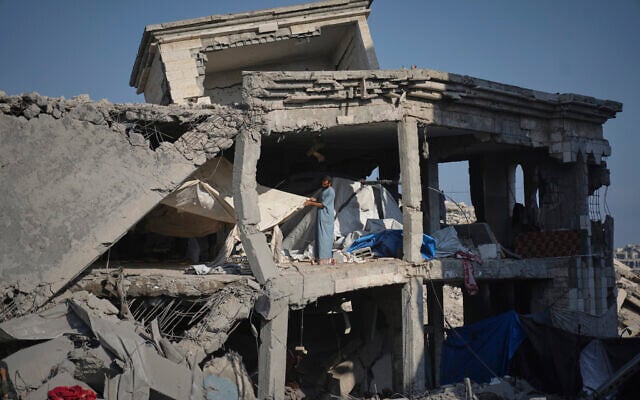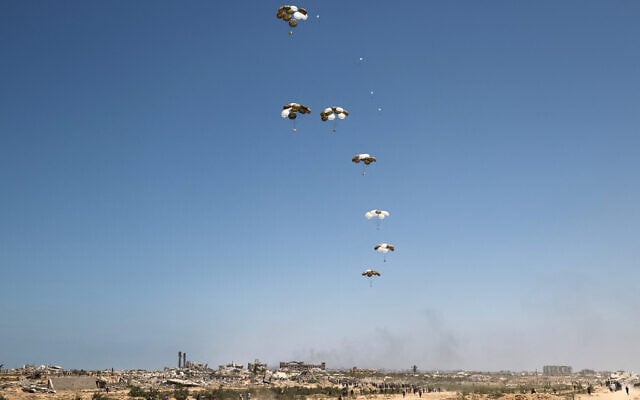Prime Minister Benjamin Netanyahu will convene his security cabinet at 6 p.m. Thursday at his office in Jerusalem, according to the Prime Minister’s Office, where it is expected to approve fresh plans for the continuation of the war in Gaza.
During a three-hour security discussion among a smaller group on Tuesday, Netanyahu was presented with options for continued military operations in the Gaza Strip by IDF Chief of Staff Lt. Gen. Eyal Zamir.
The cabinet is reportedly expected to approve a full military occupation of the Strip during Thursday’s meeting, despite Zamir and army officials warning against it.
Military officials believe that if Israel proceeds with the plan, it will lead to heavy casualties among Israeli troops, the Kan public broadcaster reported Wednesday.
The defense officials estimate that “dozens” of soldiers could be killed, and a large number would be wounded in the operation, Kan reported. Israel’s toll in the ground offensive against Hamas in Gaza and in military operations along the border with the Strip stands at 459. The toll includes two police officers and three Defense Ministry civilian contractors.
They also reportedly warned of the risk that conquering all of Gaza would pose to the remaining hostages, as until now the IDF has refrained from knowingly operating in areas where they are believed to be held.

According to Kan, the officials believe that the hostages could be killed either intentionally by their captors if the IDF approaches or inadvertently by Israeli troops.
With the IDF widely reported to be at odds with the political leadership over the next steps to take in Gaza, as Netanyahu is said to be set on moving forward with occupation, Zamir has reportedly recommended the military instead take a more gradual approach and encircle Gaza City.
Netanyahu reportedly shot down Zamir’s suggestion and told him to prepare plans for the occupation of the Strip.
Opposition Leader Yair Lapid said he told Netanyahu during a security briefing Wednesday morning that occupying Gaza would be “a very bad idea.” According to Lapid, the price of such a move would be “too heavy” for Israel to bear, both financially and in the number of casualties it would likely lead to.
“You don’t send the State of Israel to war unless the majority of the people are behind you, and the people of Israel are not interested in this war,” Lapid said he told the premier.
Instead of engaging in the “pointless occupation” of Gaza, Lapid said Israel should allow Arab countries to govern the enclave, freeing up Israel to take the time it needs to eliminate Hamas.
As the government mulls its next steps, the military continued to strike terror targets in Gaza.
A Hamas weapons manufacturing site in Gaza City’s Sheikh Radwan neighborhood was struck Tuesday by the Israeli Air Force, the IDF said.
To mitigate civilian harm in the strike, the military said it issued an evacuation warning and used a precision munition, aerial surveillance, and other intelligence.

Meanwhile, the IDF said the 215th Artillery Regiment shelled a launching position used by terror operatives to fire mortars at an army encampment in northern Gaza Tuesday. No injuries were caused in the mortar attack.
In the area of the Daraj and Tuffah neighborhoods of Gaza City, troops of the 401st Armored Brigade directed a drone strike on a cell of some 10 operatives and eliminated them, the military said.
Elsewhere in Gaza, the IDF said it demolished Hamas infrastructure and killed additional operatives.
The Hamas-run health ministry in Gaza said 138 Palestinians were killed in the Strip during the previous 24 hours.
On Wednesday, the IDF issued an evacuation warning in the Gaza Strip for Palestinians residing in a small zone in western Khan Younis, after earlier issuing an evacuation warning for the Gaza City neighborhood of Zeitoun.
“The IDF is continuing its ground maneuver and is using heavy force in your area to expand the scope of the fighting,” said the military’s Arabic-language spokesperson Col. Avichay Adraee in a post on X, attaching a map of the area that is to be evacuated.
He said that the evacuated zone will not be part of the areas that see a daily “humanitarian pause” for the delivery of aid.
#عاجل ‼️الى جميع المتواجدين في المنطقة المحددة، بما في ذلك المتواجدين في الخيام في حي النصر في خان يونس في البلوك 110 والجزء الشرقي في بلوك 89
⭕️يواصل جيش الدفاع تنفيذ مناورته البرية ويستخدم قوته الشديدة في منطقتكم ليتم توسيع نطاق القتال.
⭕️نؤكد ان المنطقة لن تكون ضمن المناطق…
— افيخاي ادرعي (@AvichayAdraee) August 6, 2025
Aircraft from the United Arab Emirates, Jordan, Germany, Belgium, and France airdropped 107 pallets of humanitarian aid in the Gaza Strip on Wednesday, the IDF said.
Each pallet contained around one ton of food.
Since July 26, nearly 900 humanitarian aid packages have been airdropped in the Gaza Strip by nine countries, including Israel, according to the military. The packages the IDF airdropped were supplied by international aid groups.
Images of starving Palestinians, including children, have alarmed the world in recent weeks, ramping up international pressure on Israel to enable more aid into the coastal enclave where war has been raging since the devastating Hamas-led attack on Israel on October 7, 2023.

Israel says that Hamas steals supplies from deliveries by the UN and international aid groups. The US- and Israel-backed Gaza Humanitarian Foundation (GHF), established to provide aid via an alternative that would keep goods out of Hamas’s hands, has been plagued by near-daily shooting incidents that have seen hundreds killed as they try to reach the GHF distribution centers.
Israel has also denied allegations of widespread starvation in Gaza and blamed the UN and Hamas for obstructing or diverting aid meant for civilians. In late July, the government instituted a series of measures to alleviate hunger in the Strip, including airdrops and 10-hour “humanitarian pauses” in military operations in three population centers to allow deliveries of aid.
Earlier this week, for the first time in nearly a year, Israel announced it would allow the entry of goods into Gaza through the private sector, an effort aimed at increasing the flow of essential food and hygiene items that were previously only delivered by aid organizations.
Despite the measures, humanitarian groups continue to sound the alarm over widespread starvation in Gaza and increasing reports of deaths due to malnutrition.
The ongoing war erupted after the Hamas-led October 7, 2023, massacre, in which some 5,600 terrorists invaded the country, killing 1,200 people, mostly civilians, and taking 251 hostages to Gaza.
The Hamas-run Gaza health ministry says more than 60,000 people in the Strip have been killed or are presumed dead in the fighting so far, though the toll cannot be verified and does not differentiate between civilians and fighters. Israel says it has killed some 20,000 combatants in battle as of January and another 1,600 terrorists inside Israel during the October 7 onslaught.
Israel has said it seeks to minimize civilian fatalities and stresses that Hamas uses Gaza’s civilians as human shields, fighting from civilian areas including homes, hospitals, schools, and mosques.

